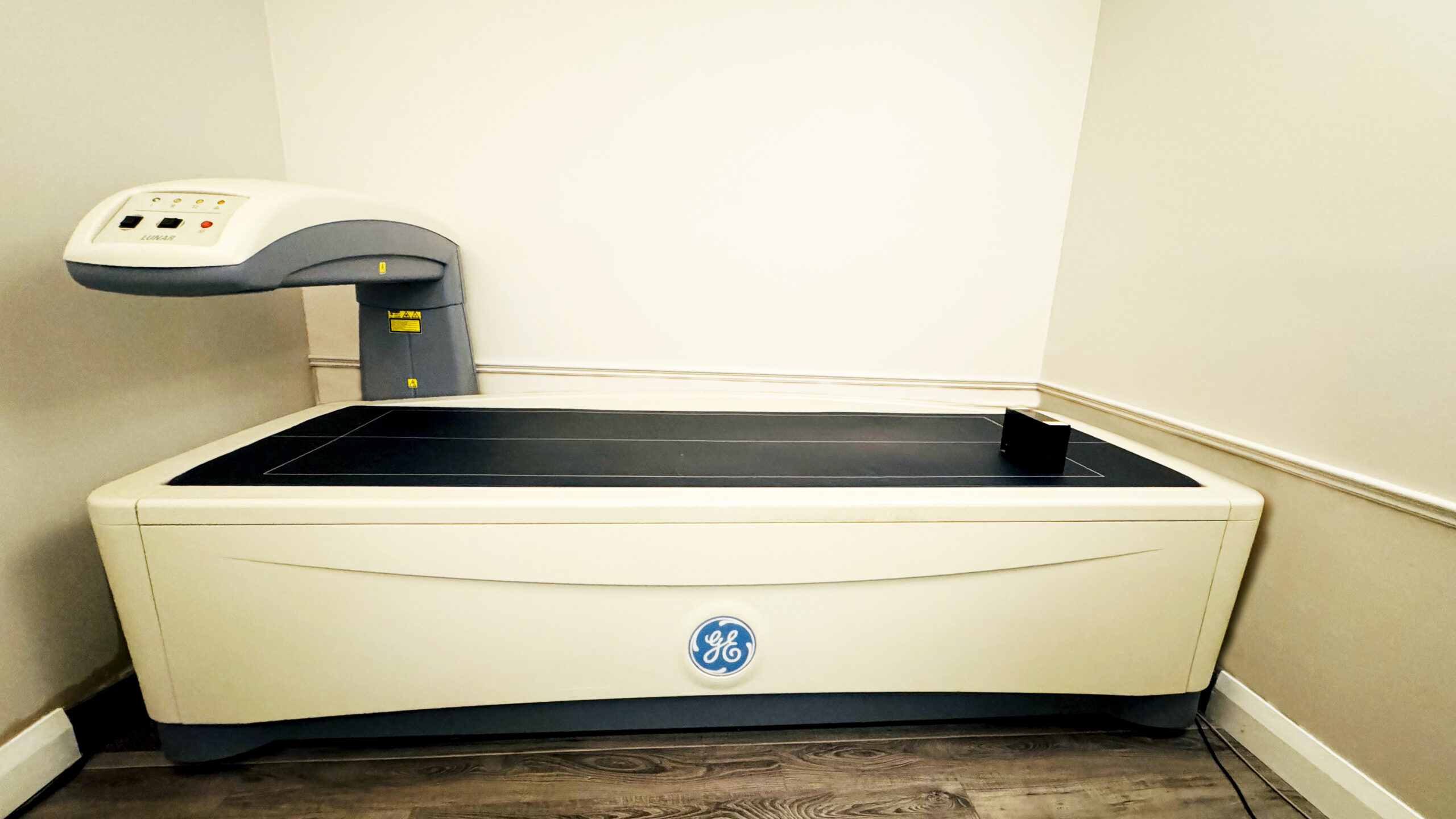What is Bone Mineral Densitometry?
Bone Mineral Densitometry (BMD), also known as Dual-Energy X-ray Absorptiometry (DXA or DEXA), is a non-invasive diagnostic imaging procedure used to measure bone mineral density. This test is primarily used to assess the strength of bones and the risk of fractures. It helps in diagnosing conditions like osteoporosis and osteopenia, which are characterized by low bone density.
How BMD Works
- Dual-Energy X-ray: The procedure utilizes two different X-ray beams to estimate the density of your bones. The amount of X-rays that pass through the bone is measured for each beam, allowing the system to differentiate between bone and other tissues.
- Common Sites for Measurement: The most common areas for BMD testing are the spine, hip, and sometimes the forearm. These areas are particularly prone to fractures, especially in older adults.

Why BMD is Important
- Osteoporosis Diagnosis: BMD is the gold standard for diagnosing osteoporosis. It provides a T-score, which compares the patient’s bone density to that of a healthy young adult of the same gender.
- Fracture Risk Assessment: The test helps in assessing the risk of fractures, which is crucial for preventive healthcare, especially in postmenopausal women and older men.
- Monitoring Bone Health: BMD tests can monitor changes in bone density over time, allowing healthcare providers to evaluate the effectiveness of treatment for conditions like osteoporosis.
BMD Test Procedure
- Preparation: No special preparation is required. Patients may be advised to avoid calcium supplements before the test.
- During the Test: The patient lies on a padded table while the scanner passes over the body. It is a quick procedure, usually taking about 10-30 minutes.
- After the Test: Results are often discussed during a follow-up appointment, where the healthcare provider explains the T-score and Z-score, and advises on further steps if necessary.
T-Score and Z-Score
- T-Score: Indicates how much the patient’s bone density deviates from the average bone density of a healthy young adult.
- Normal: T-score of -1.0 and above
- Osteopenia (Low Bone Mass): T-score between -1.0 and -2.5
- Osteoporosis: T-score of -2.5 and below
- Z-Score: Compares the patient’s bone density to what’s expected for someone of the same age, sex, and body size. A significantly lower Z-score may suggest a secondary cause of bone loss.
Indications for BMD Testing
BMD testing is typically recommended for:
- Postmenopausal women and men aged 50 and older
- Individuals with a history of fractures
- Patients on long-term steroid therapy
- People with conditions or medications associated with bone loss
- Individuals with a family history of osteoporosis
Benefits of BMD
- Early Detection: Helps in the early detection of bone loss, allowing for timely intervention.
- Non-Invasive: The test is quick, painless, and non-invasive.
- Guides Treatment: Provides valuable data for making informed decisions about bone health management.
Limitations of BMD
- Radiation Exposure: Although minimal, there is some exposure to radiation.
- Limited Information: BMD does not provide information on bone quality, only bone density.

